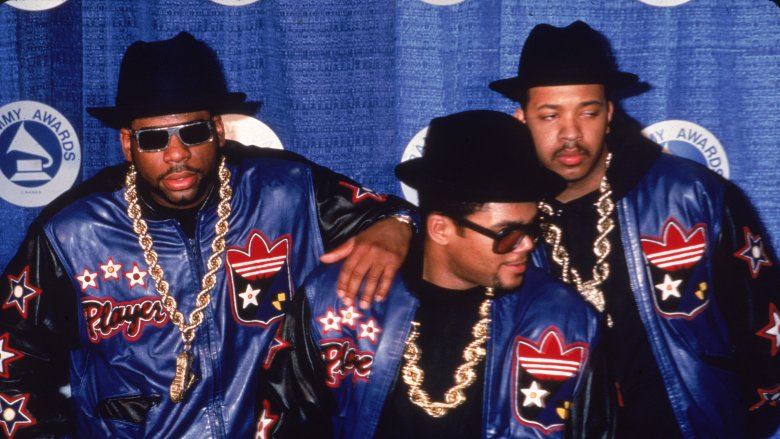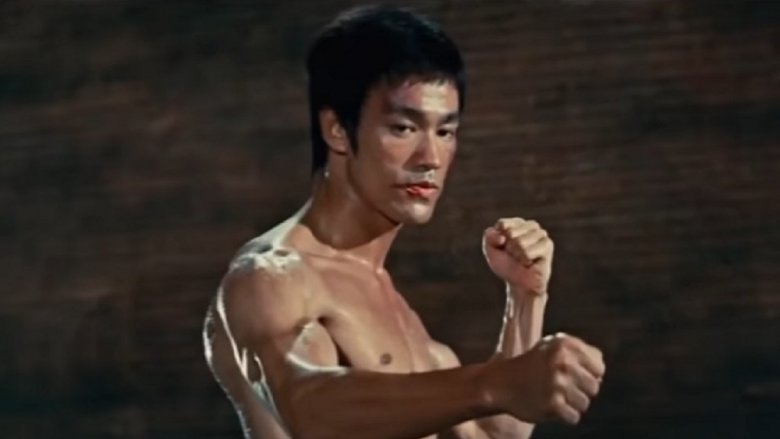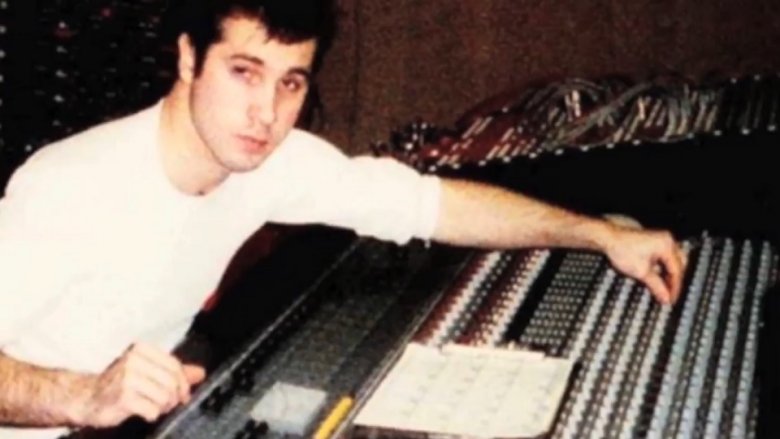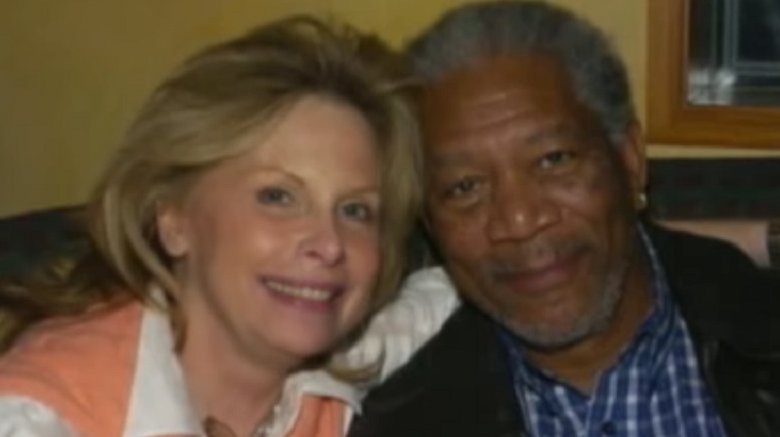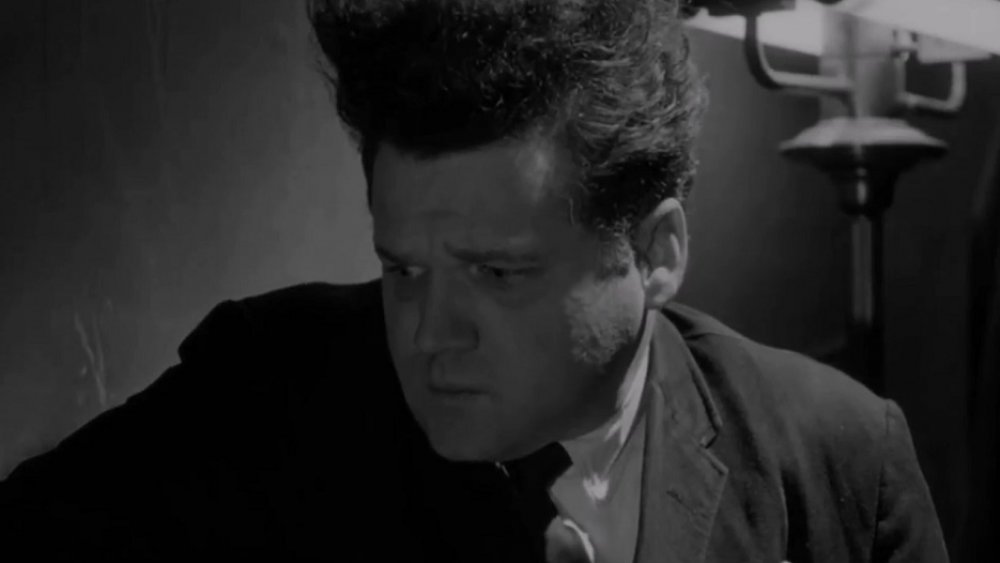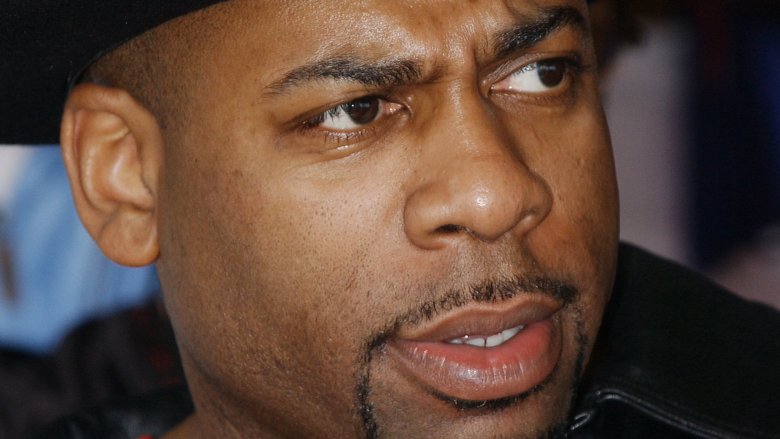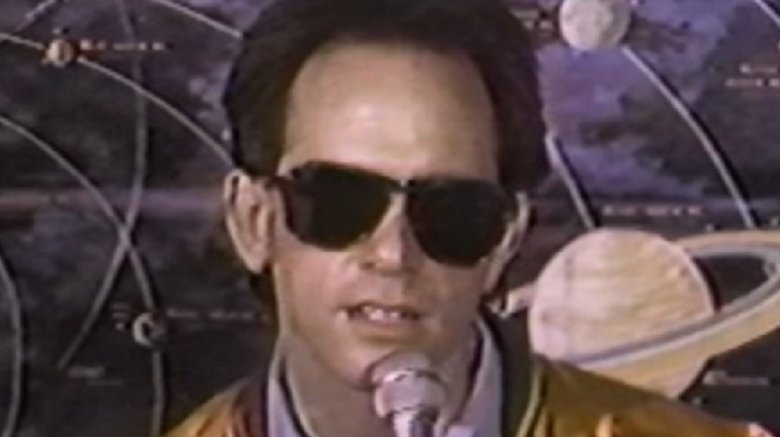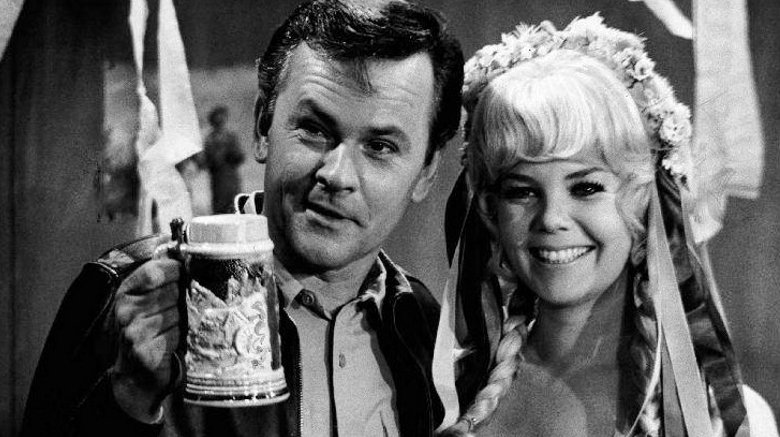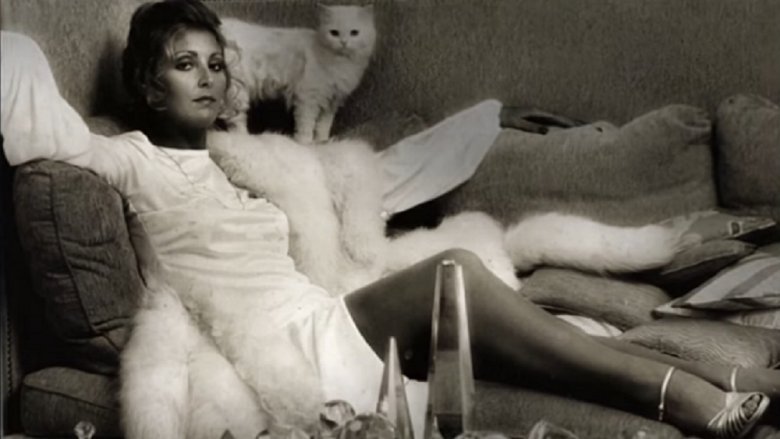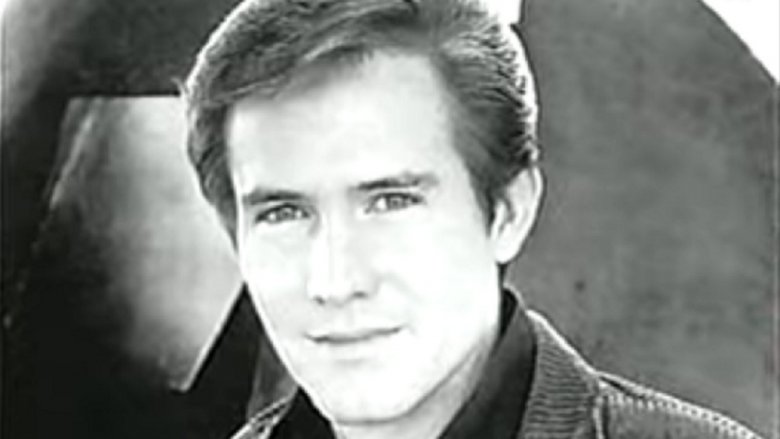Unsolved Celebrity Deaths That Will Keep You Up At Night
People have always had a thing for unsolved mysteries, which is why beloved character actor Robert Stack had a job in the '90s and we're inundated with cable docu-drama series sporting variations on the theme to this day. We like to play armchair detectives, formulating our own theories as to the guilty parties and assuring ourselves that if we were working the case, we'd have long ago dragged the perpetrators into the cold light of justice.
Of course, this is a bunch of malarkey. Real detectives spend considerably less time than most of us sitting in armchairs and considerably more pounding the pavement, interviewing witnesses, and gathering clues — yet somehow, a goodly number of vicious crimes stubbornly refuse to roll over and let themselves be solved. Even in cases in which the victims are high-profile celebrities, getting to the bottom of a murder case is way more difficult than it looks on TV. If you have any doubt, take a look at these baffling unsolved murders. The perpetrators have never been brought to justice, despite the fact that their creepy circumstances kept detectives up at night — and they just might give you a touch of the heebie-jeebies as well.
No man could defeat him
When most people hear the words "Bruce Lee," their brains automatically translate the words as "unstoppable badass who moves at the speed of sound despite being made out of iron." Lee wasn't a master of martial arts; he was martial arts. He created Jeet Kune Do, a formless art that was just as much philosophy as it was fighting style, while lying immobile in a hospital bed after an injury. He beat the crap out of Chuck Norris onscreen, and once kicked karate master Bob Wall so hard that he flew backward into an extra and broke that guy's arm. It seemed like nothing could ever take him down — but something did, even if we still don't know what it was over four decades later.
Lee died at the age of 32 in the apartment of a friend, and the official cause of death was cerebral edema — a swelling of the brain. Theories immediately began to fly, from heatstroke (because he'd had the sweat glands in his armpits removed) to an allergic reaction to a painkiller to, well, ninjas. But no satisfactory explanation was ever found, unless Lee indeed found it himself. As depicted in the 1993 biopic Dragon: The Bruce Lee Story, Lee was convinced that a demon stalked the male members of his family — including his son Brandon, who would die in a tragic on-set accident in 1993.
The legend who wasn't
Paul C. is a legend among fans of golden age rap music, but if the world were a just place, you could remove any qualifiers and simply dub him a Legend with a capital L. Perhaps his most significant accomplishment: He was the first to employ the E-mu SP-1200, a sampling sequencer that has acquired legendary status on its own for its ability to impart rap beats with a natural, acoustic sound. He schooled a score of prominent producers in its use and built up his name through his production and engineering work on such classics as Queen Latifah's "Ladies First," Biz Markie's "Just a Friend," and the majority of Eric B. and Rakim's third album Let the Rhythm Hit 'Em. In a documentary, associate CJ Moore described him as "a man who was going to input some of the baddest sh*t that was ever heard on this planet, because he was that serious" — but it wasn't to be.
In 1989, Paul was shot to death in his home by an unknown assailant, and the fact that he really had no known enemies and was in perfect spirits the day before shocked and dumbfounded his friends and associates. After the murder was featured on America's Most Wanted, a tip led to the arrest of one Derrick Blair, who was never charged due to lack of evidence. Paul's death cast a pall over the burgeoning rap scene, and to this day, friends grieve for the superproducer he would've become.
To live and die in L.A.
On November 16, 2010, Hollywood power agent Ronni Chasen was driving along Sunset Boulevard through a ritzy neighborhood after leaving the premiere party for the feature film Burlesque. Suffice to say it wasn't an area where random shootings were known to take place, but as Chasen slowed her vehicle, someone pumped four shots from a handgun through her drivers' side window, killing her almost instantly. It was one of the more brazen, shocking murders Hollywood had ever seen — and, if critics are to be believed, the Beverly Hills Police Department bungled the investigation so thoroughly that it's unlikely to ever be solved.
Speculation ran wild as to who could possibly want the fun-loving and effervescent agent dead, running the gamut from gambling debtors to shady financiers to a random incident of road rage. But the BHPD's investigation quickly focused on Harold Smith, a down-and-out nobody who committed suicide when police confronted him. The case was declared closed, but documents released in 2017 show an extremely limited investigation that ignored other potential suspects and witnesses, failed to take advantage of all available surveillance footage (none of which placed Smith at the scene) and had a severe case of tunnel vision for Smith, a questionable suspect. Even in light of this information — and the fact that not one shred of physical evidence links Smith to the crime — the case has not been reopened.
Eraser-head injury of doom
Jack Nance was the unlikely muse of acclaimed director and famous weirdo David Lynch, who cast him as the lead in his surreal masterpiece Eraserhead. Nance was also featured in Blue Velvet, Twin Peaks and its theatrical coda Fire Walk with Me, and would have gone on to anchor even more Lynchian weirdness had he not gotten involved in a random street fight in 1997. After exchanging words with two young men in a doughnut shop, Nance was punched twice in the head; he arrived home complaining of a terrible headache, but otherwise didn't seem out of sorts. The next day, a friend who stopped by to check up on him found him dead of his injuries.
Lynch remembered his friend as easily irritated and prone to being vocal about it, which may have had something to do with the altercation. "He spoke his mind and had a dry wit — he often got into trouble," the director said in an interview. The men who delivered the fatal head-punching were never identified, and decades after the fact, it's highly doubtful they ever will be.
Death of a one-man band
Another hip-hop legend whose life was cut tragically short, Jason Mizell — better known as Jam Master Jay, the DJ who anchored the sound of iconic Queens trio Run-D.M.C. — was as well-liked as anyone in the industry, rendering his shocking murder even more baffling. In late October 2002, Mizell was working in the studio when an unknown group of people arrived. Also present were Mizell's friend Randy Allen and associate Uriel Rincon, who described Jay greeting the group warmly after having his assistant buzz them in to the studio. An hour later, Mizell was dead of a gunshot wound to the back of the head — and to this day, the only people who may know why aren't talking.
Former NYPD detective Derrick Parker gave an interview to DJ Vlad 15 years after the fact and told him, alluding to the infamous murders of Notorious B.I.G. and Tupac Shakur, the following: "I would say that any case out of the big three, that [the Jam Master Jay] case is close to being somewhat solved," he said. "Soon, I hope." He chalks the case's persistent unsolved status up to the failure of witnesses to cooperate, which there just may be a good reason for: Mizell's cousin Ryan Thompson is of the opinion that any potential witnesses would be jailed as accomplices if they spoke up. In October 2017, the case was officially deemed cold, and it doesn't seem like it'll be heating up anytime soon.
The death of New Wave
Though Peter Ivers helped compose music for Eraserhead, he spent the early '80s making a name for himself on the burgeoning New Wave scene, which he championed as the host of USA Network's New Wave Theatre from 1981 to 1983. His eccentric style in interacting with those on the cutting edge of the L.A. New Wave and hardcore scenes could border on performance art in its own right, and Ivers may have well been on his way to national stardom as a television personality — had his life not been cut brutally short on March 1, 1983.
Ivers was found bludgeoned to death in his L.A. apartment, and police determined he had been killed by an intruder — perhaps an "opportunistic burglar" — which is a theory that your average sixth-grader might likely have arrived at given the available information. It quickly became apparent that no additional leads would be forthcoming, and perhaps it's due to Ivers' unfortunate absence that his beloved New Wave music likewise suffered an unceremonious demise in short order.
A picture-perfect image shattered
Bob Crane was the genial, handsome star of '60s sitcom Hogan's Heroes, a man well-liked by his peers who had remained in the public eye via a steady stream of guest roles in popular shows throughout the '70s. His wholesome, squeaky-clean image made his gruesome 1978 murder all the more unfathomable. He was discovered in his Scottsdale, Arizona, home with his head bashed in and an electrical cord tied around his neck. But if his death was shocking, the details about his private life that leaked out afterward were positively mind-boggling.
Namely, Crane was heavily into photographing and otherwise documenting his many, many romantic encounters with women, something his friend John Carpenter might have helped him with. Carpenter immediately became the focal point of the investigation and was even tried for the crime in 1994, but was acquitted. A 2016 re-examination of DNA evidence also failed to pin the crime on Carpenter (who died in 1998), and the case officially went cold once again. The case was the subject of the excellent 2002 film Auto Focus, directed by the legendary Paul Schrader and starring Greg Kinnear and Willem Dafoe as Crane and Carpenter, respectively. While the film certainly isn't reserved in its opinion that Carpenter was responsible for the crime, it's doubtful we'll ever know for sure.
Diary of a lost starlet
Christa Helm was never a household name, but the striking actress may very well have been if she hadn't met her mysterious fate. Arriving in Hollywood in the early '70s, Helm managed to land bit parts on such popular TV series as Wonder Woman and Starsky and Hutch — but she was allegedly much more prolific with the fellas than she was with her roles. She was rumored to have bedded such diverse talents as Warren Beatty, Joe Namath, and Mick Jagger, and she wasn't shy about recording all the juicy details — complete with a rating system — in her "sex diary." One day, a friend received a postcard from Helm with an ominous message: "I am in way over my head here. I'm into something I can't get out of." Shortly thereafter, the starlet was brutally stabbed and bludgeoned to death on a West Hollywood street.
The investigation quickly zeroed in on the diary — or rather it would have, had the diary actually been present. It, along with several tapes Helm had recorded of her encounters, were conspicuously missing from her home when investigators attempted to recover them. While it was theorized that she had turned to extortion to supplement her sparse acting gigs, nothing was ever proven, and the diary and tapes were never found.
The murder mystery that refuses to die
The death of uber-glamorous actress Natalie Wood riveted the nation in 1981. During the filming of the thriller Brainstorm, Wood was enjoying some R&R aboard a yacht anchored off Catalina with husband Robert Wagner and castmate Christopher Walken. Somehow, Wood vanished from the boat, and her body was later found floating over a mile away. The death was ruled an accidental drowning — until it was reopened in 2011 due to new information from witnesses.
Investigators have largely kept the nature of this information under wraps, but enough is known to poke some serious holes in Wagner's story. He claims he and Walken had an argument, then calmed down and noticed that Wood was missing — but multiple witnesses claimed to have heard a man and a woman arguing heatedly during the time frame in question, and investigators have also noted that Wagner has at times failed to get his story straight. Add to this the fact that Wood was known to be terrified of water and that she "looked like the victim of assault" when investigators recovered her body, and it became clear that Wagner, Walken, or both were not being totally forthcoming about things. In 2011, the case was reopened. Wagner — now in his 80s — was deemed a person of interest in 2018. The renewed investigation has been ongoing ever since, which doesn't seem to bode well for its resolution.
Don't blame it on the law
In 1966, rocker Bobby Fuller was riding high with his band, the Bobby Fuller Four, basking in the success of their hit single "I Fought the Law" (a skirmish which, as we all know, the law won). He had just signed a fat distribution deal and seemed ready to repel the entire British Invasion all by himself when he received a fateful phone call early in the morning on July 18. After the call, he departed his apartment in his mother's Oldsmobile — but we'll never know who he was going to meet or why. Later in the day he was found dead of asphyxiation in the car's front seat. Bruises covered his body, and he'd been doused in gasoline.
Amazingly, responding officers quickly pegged the scene as a suicide. A nearby gas can was disposed of without being dusted for prints, people were never questioned, and the bruises were chalked up to the gas fumes and the summer heat. Fuller's family never bought the suicide explanation. He was at the peak of fame and showed no signs of depression. But author Miriam Linna, who wrote a book on the case, has her suspicions: "In July 1966, Bobby had had it," she said in an interview. "The band was going to break up. ... He was going to go solo." She suspects he was killed because he wanted out. The case is still unsolved.
